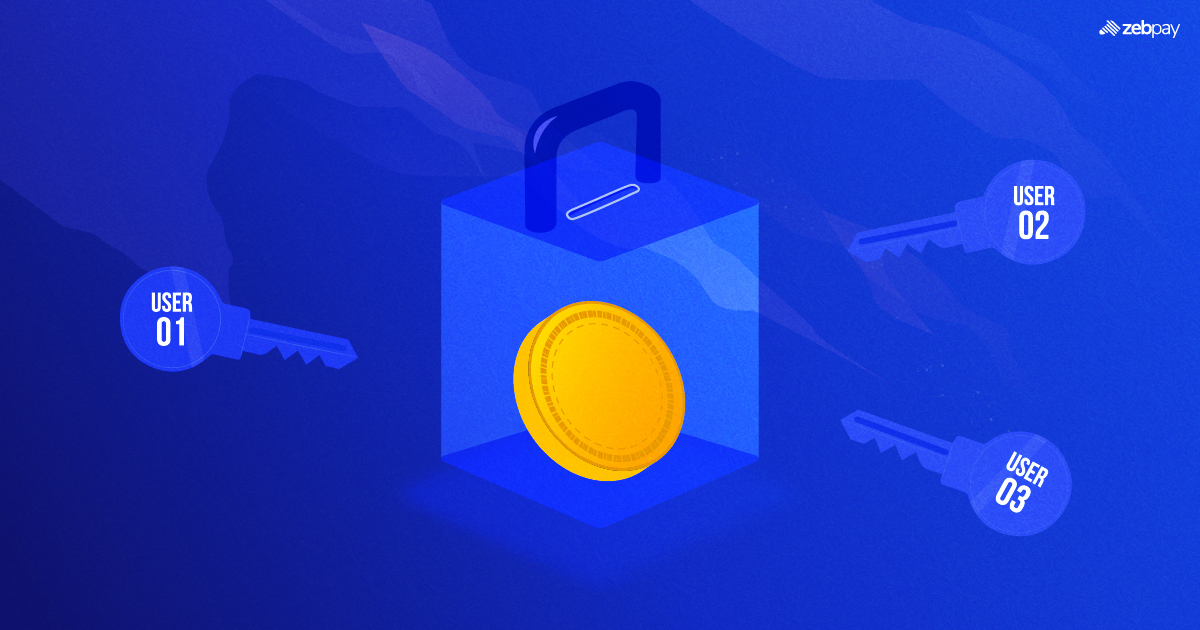One of the biggest concerns in the Crypto Industry today is asset security. “Is my money safe?”, is one question users ask themselves before storing their money in a certain crypto exchange. When users invest their hard earned money, it’s imperative that they get to know what measures are taken to keep their wealth secure.
With Web 3.0 and decentralised finance picking up pace, old security systems are fast turning redundant. It’s necessary to implement systems which are fail-proof, trustworthy and secure.
At ZebPay we pride ourselves in being transparent, efficient and decentralised. Today, let’s understand a key security protocol followed by ZebPay to keep your crypto secure.
What is a MultiSig Wallet?
Multi-signature, in short called Multi-Sig, is a protocol which has numerous use cases but is widely used in asset management, banking and Crypto transactions. The objective of a Multi-Sig protocol is to avoid a single point of failure by enabling a consensus based mechanism to access stored information and assets. A single point of failure can be avoided by enabling a group of people to approve a transaction, thereby having multiple checkpoints. These wallets can be set-up at an organisational and an individual level. For Eg: An individual can have multiple keys to access his/her crypto wallet.
How Does MultiSig Work?
In simple terms a Multi-Sig wallet requires two or more signatures to enable a crypto transaction using private keys. Imagine a lock which requires more than one key to be opened. This adds an additional layer of security to the lock. Similarly, when a multi-sig protocol is enabled for a crypto wallet, any attempt to access the wallet requires two or more signatures. This in effect ensures that one person/signature cannot access funds. The signature being distributed across several points make access of funds secure, highly fail-proof and consensus driven. The funds remain secure in an event where one of the signatures is compromised. Co-owners of a Multi-sig wallet have access to view transactions in effect implementing a regulation over other owners of the wallet. These wallets are generally classified as -1 of 1, 2 of 2, 2 of 3, etc For eg: a 2 of 3 wallet requires the authorization of any two out of the three owners, while the third owner can always verify transactions.
Single Signature Vs MultiSig
A signature is effectively an authorization to perform an action. It is a unique identity which can be traced back to a particular person. Fingerprints, signatures, and private-keys are a good way to affirm traceability but not security. In contrast to a multisig protocol, a single signature wallet does not have the above security features. “A large sum of wealth with only a single private key , where the key is with one individual or the same key is with multiple individuals?”- Not really a great idea to keep funds secure,right?. Single key options can be a comfortable option for individual use. For eg: A PIN to access an app , or a fingerprint to detect identity. But when it comes to organisations which deal with public wealth, it fails to secure funds effectively.
In-comparison to other security protocols, using a multi-signature cold wallet is the safest way to store funds. Cold wallets are offline wallets not connected to the internet. This makes the stored funds virtually inaccessible through the internet. On top of this layer, when there is a multi-sig protocol attached to a cold wallet, it raises the bar even further.
Conclusion
The features of a Multi-sig wallet make it a great feature to up the standard on fund security. It provides assurance for better security and is far superior to traditional single-signature security protocols. It further enables decentralised decision making, which is in line with how ZebPay operates at every step. At ZebPay, we treat security with utmost importance. With close to 98% of our funds being stored in Multi-sig cold wallets, users can trade using the ZebPay app stress-free.

